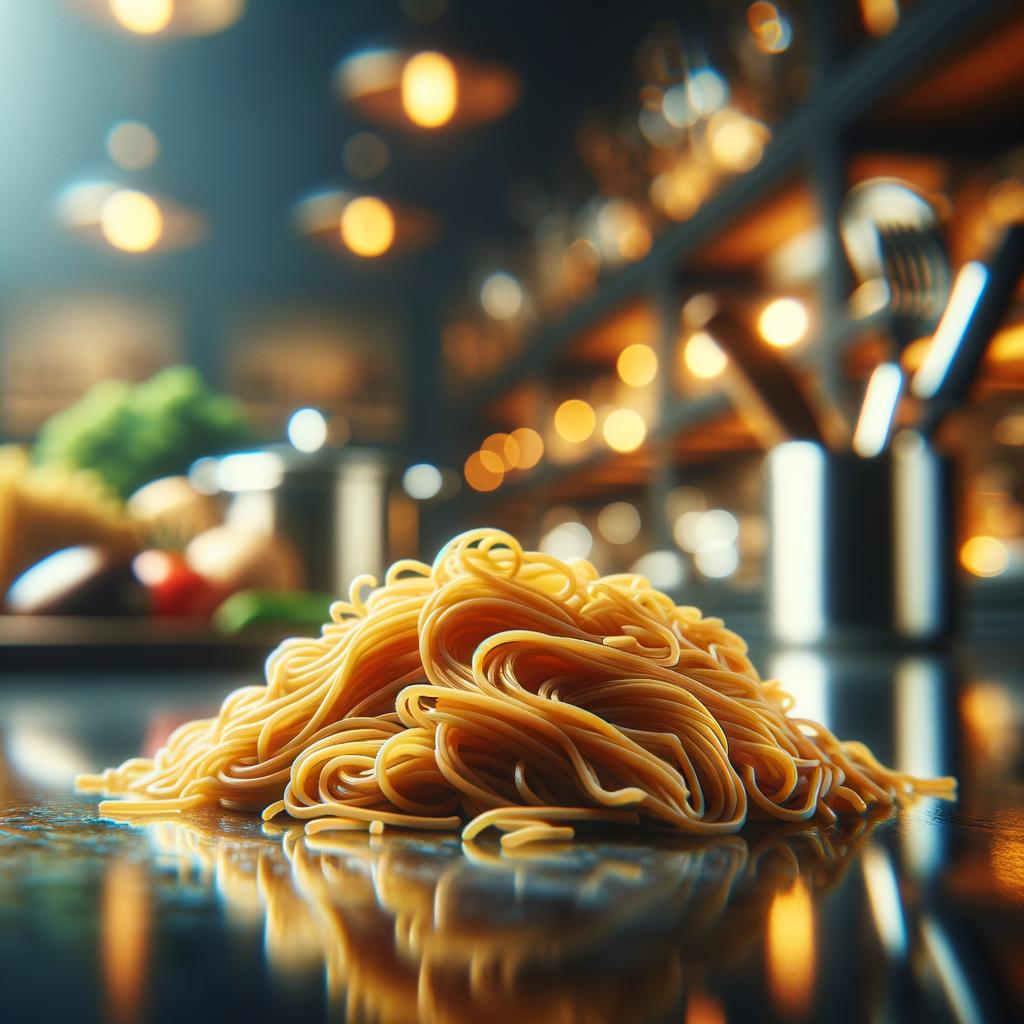Bami Noodles

Description Bami noodles, also known as Ba-Mee, are a delightful ingredient that hails from the vibrant culinary landscape of Thailand. These noodles are a feast for the senses, boasting a bright, golden hue, a satisfyingly springy texture, and a delicate, subtly sweet flavor. Made primarily from wheat flour and duck eggs, Bami noodles are distinct from other Asian noodles due to their unique, slightly chewy texture and rich, egg-y flavor. Their inherent elasticity and ability to soak up flavors make them a versatile and delightful addition to a variety of dishes.
Primary Uses Bami noodles are the star of many Thai dishes, showcasing their versatility and ability to complement a wide array of flavors. They are commonly used in soup dishes like "Bami Nam" or "Bami Haeng", where the noodles are served with a rich, flavorful broth, or dry with a variety of toppings respectively. Stir-fries also benefit from the addition of these noodles, as they add a delightful textural contrast. Beyond the culinary world, Bami noodles also hold cultural significance in Thailand, often served during celebrations and festivals as a symbol of long life and prosperity.
History The history of Bami noodles is as rich and nuanced as their flavor. It is believed that they were introduced to Thailand by Chinese immigrants, and over time, they have been embraced and adapted by the Thai people, becoming a staple in their cuisine. The use and popularity of Bami noodles have evolved over time, from being a simple, everyday food to being a key ingredient in celebratory dishes. There's a charming folklore associated with these noodles, it's believed that the longer the noodle, the longer the life, hence, it's considered bad luck to cut them.
Nutritional Information Bami noodles are not just a treat for the palate, but they also offer a host of nutritional benefits. They are a good source of carbohydrates, providing energy for the body. The addition of duck eggs in the noodle dough adds a boost of protein, making them more nutritionally balanced than some other types of noodles. They also contain some essential minerals such as selenium and zinc. However, like other noodles, they should be consumed in moderation as part of a balanced diet, as they can be high in calories.
In comparison to rice noodles, another staple in Thai cuisine, Bami noodles have a slightly higher protein content due to the incorporation of duck eggs. On the other hand, rice noodles are gluten-free, making them a suitable option for those with dietary restrictions.
As we journey through the world of food, Bami noodles serve as a beautiful reminder of the rich tapestry of culinary traditions, flavors, and stories that make up our global food heritage.

